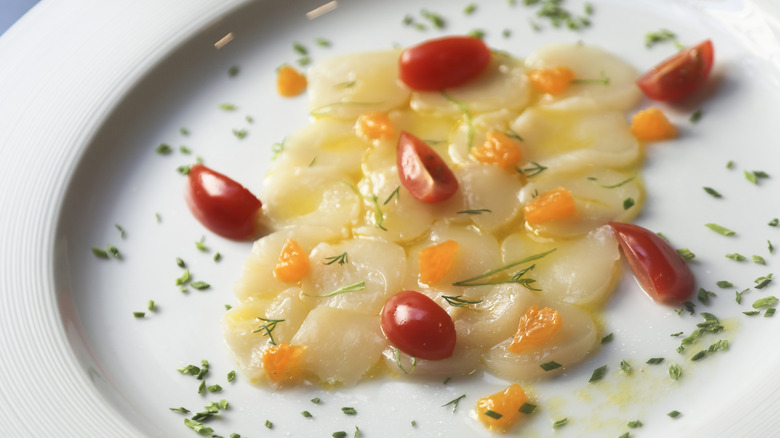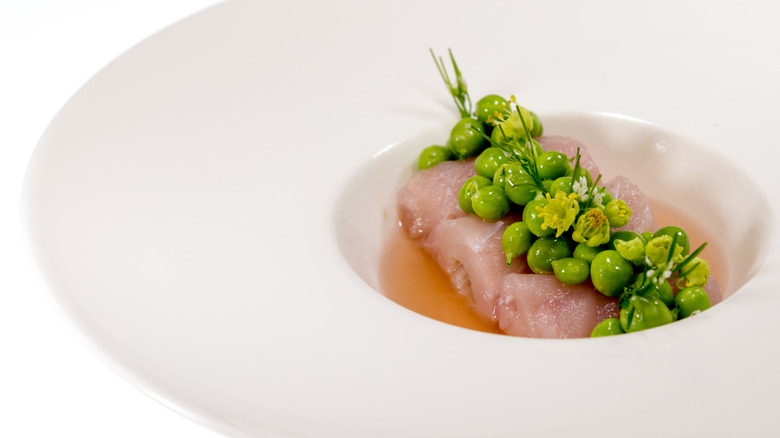What Is Crudo And Is It Any Different From Ceviche?
Crudo and ceviche are both seafood-based dishes you'll often find on restaurant menus. The term "crudo," in Italian (and Spanish), means "raw." And indeed, crudo refers to a raw fish preparation where the fish comes sliced thinly, with a dressing that is usually composed of a combination of oil and some form of acid (like citrus juices or vinegar). You can also see the term "crudo" describe certain cured meats like prosciutto, which simply refers to the fact that it isn't treated with heat — but for the purpose of this piece, we're sticking to the raw fish preparation.
Crudo can be made with fish or shellfish like scallops or shrimp, and the dressing can be as simple as lemon juice, olive oil, and salt. It can also be as complicated as any high-end chef wants to make it.
Ceviche is also a raw seafood preparation, but in this case, the fish or shellfish sits in a dressing that's primarily citrus-based, which has a unique effect: It changes the texture of the meat so it appears cooked, becoming opaque and firm, just as a heat-treated fish would. The truth is, ceviche is actually more along the lines of being cured, which means it's safer than being raw. Regardless, you should always get high-quality fish to ensure the highest level of safety. (I'm just looking out for you.)
Crudo is extraordinarily easy to make at home
I'm sure a lot of fine dining chefs will get grouchy at me for saying this, but if you see crudo on a menu, it's rarely worth ordering. That's because it's so simple to make at home that it seems silly to pay that much for just a few slices of raw fish. If you go to any fish counter or Asian grocery store that sells sashimi-grade fish. You can get a filet of your favorite raw stuff like salmon, yellowtail, or even scallops you don't want to sear, or ask your fishmonger for guidance. Then you can slice the fish thinly at home, dress it with fresh lemon juice, good olive oil (don't use the cheap stuff!), and some flaky sea salt, and you're good to go.
You can get fancy with it by adding fresh, delicate herbs like dill, or orange zest, or different clear vinegars once you feel comfortable, but the key really is to not overpower the fish too much. You're looking for a gentle dressing that helps you enjoy the fresh seafood, rather than a powerful marinade. And when it comes to crudo, it typically serves as a light starter, which is something easy but fancy-feeling to impress your friends with. And that's not talking down to ceviche, either, which is so easy, you can make it for a perfect summertime lunch. It really just depends on your mood. If you want fresh and light, treat yourself to some crudo, and if you want something wonderfully bright and acidic, go for the ceviche. You can't go wrong with either.

